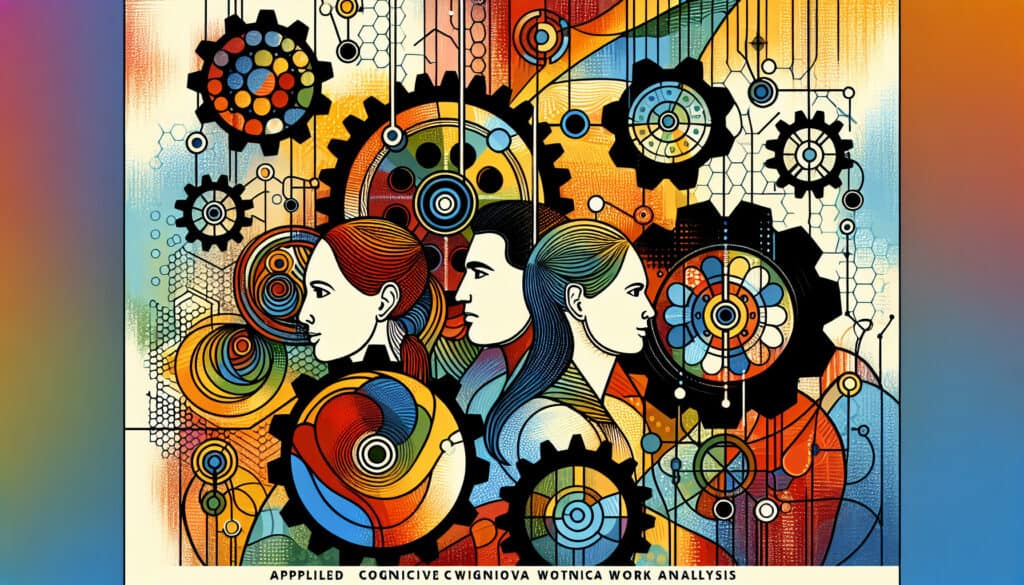A cadre pour analyser des systèmes socio-techniques complexes afin de comprendre comment le travail est effectué.
- Méthodologies : Clients et marketing, Économie, Conception de Produits
Analyse cognitive appliquée du travail (ACWA)

Analyse cognitive appliquée du travail (ACWA)
- Informatique cognitive, Amélioration continue, Pensée conceptuelle, Ergonomie, Facteurs humains, Conception centrée sur l'humain, Amélioration des processus, Gestion des risques, Langage de modélisation des systèmes (SysML)
Objectif :
Comment il est utilisé :
- L'ACWA est une méthode d'analyse globale du travail qui combine des éléments de l'analyse cognitive du travail (CWA) et d'autres techniques d'analyse du travail. Elle est utilisée pour comprendre les contraintes et les possibilités d'un système de travail et pour identifier les possibilités d'amélioration.
Avantages
- Il fournit une vision holistique du système de travail, aide à identifier les causes profondes des problèmes et peut être utilisé pour concevoir des systèmes plus efficaces et plus résistants.
Inconvénients
- Il s'agit d'une méthode complexe qui prend du temps, dont l'application nécessite un haut niveau d'expertise et qui peut ne pas convenir à tous les types de systèmes.
Catégories :
- Ingénierie, Ergonomie, Résolution de problèmes
Idéal pour :
- Analyser des systèmes de travail complexes pour améliorer les performances, la sécurité et la résilience.
L'analyse cognitive appliquée du travail (ACWA) trouve une application significative dans diverses industries, en particulier dans des secteurs tels que l'aviation, les soins de santé et la fabrication, où les subtilités de l'interaction humaine avec la technologie et l'environnement nécessitent une analyse détaillée. Cette méthodologie peut être particulièrement utile lors de la phase de conception de nouveaux systèmes ou processus, où la compréhension des besoins des utilisateurs et des contextes opérationnels est primordiale. Les participants sont généralement des équipes pluridisciplinaires composées de concepteurs de systèmes, d'ingénieurs en facteurs humains, d'experts du domaine et d'utilisateurs finaux, ce qui facilite un examen complet des tâches professionnelles et des objectifs des utilisateurs. Par exemple, dans le domaine des soins de santé, l'ACWA est utilisée pour repenser les flux de travail afin d'améliorer la sécurité des patients et l'efficacité des cliniciens, tandis que dans le domaine de l'aviation, elle permet d'optimiser la conception de l'interface du poste de pilotage afin d'améliorer la prise de décision des pilotes. La méthode permet d'identifier les problèmes latents au sein des systèmes de travail, tels que les erreurs de communication ou les inefficacités, ce qui permet aux équipes de proposer des interventions ciblées. Elle intègre des modèles cognitifs aux techniques traditionnelles d'analyse du travail, créant ainsi une approche systématique de l'identification et de la modélisation des connaissances, des compétences et des processus mentaux nécessaires pour mener à bien des tâches dans des environnements de travail réels. Par le biais d'ateliers et de sessions de collaboration, l'ACWA favorise l'alignement des objectifs organisationnels sur la conception centrée sur l'utilisateur, en veillant à ce que les systèmes développés répondent non seulement aux normes de performance, mais améliorent également la satisfaction de l'utilisateur et la capacité d'adaptation à des défis inattendus.
Principales étapes de cette méthodologie
- Définir le domaine de travail et son environnement opérationnel.
- Identifier les fonctions de travail et les tâches correspondantes dans le domaine.
- Analyser les contraintes imposées par l'environnement de travail et les technologies.
- Cartographier les exigences cognitives et les connaissances, compétences et stratégies associées requises.
- Évaluer les interdépendances entre les tâches et leur impact sur les performances professionnelles.
- Identifier les lacunes des systèmes actuels et les domaines d'innovation potentielle.
- Concevoir des interventions qui s'alignent sur les contraintes et les opportunités identifiées.
- Faire évoluer la conception en fonction du retour d'information des parties prenantes du système.
Conseils de pro
- Intégrer des méthodes d'observation directe dans le cadre de l'ACWA afin de capturer les connaissances tacites des praticiens dans le système de travail, en révélant les flux de travail cachés et les interactions subtiles souvent négligées.
- Utiliser les ateliers des parties prenantes pour explorer ensemble les scénarios de travail, ce qui améliore l'identification des contraintes et des possibilités en incorporant des perspectives et des expériences diverses.
- Intégrer le prototypage itératif de solutions basées sur les conclusions de l'ACWA, permettant un retour d'information en temps réel et des ajustements qui s'alignent sur les besoins des utilisateurs et les réalités opérationnelles.
Lire et comparer plusieurs méthodologies, nous recommandons le
> Référentiel méthodologique étendu <
ainsi que plus de 400 autres méthodologies.
Vos commentaires sur cette méthodologie ou des informations supplémentaires sont les bienvenus sur le site web de la Commission européenne. section des commentaires ci-dessous ↓ , ainsi que toute idée ou lien en rapport avec l'ingénierie.
Contexte historique
1986
(si la date est inconnue ou n'est pas pertinente, par exemple "mécanique des fluides", une estimation arrondie de son émergence notable est fournie)

Articles Similaires
Gestion des opérations de fabrication (MOM)
Système d'exécution de la fabrication (MES)
Plan de contrôle de la fabrication
Tests manuels
Tableaux d'évaluation des manutentions manuelles (MAC)
ManTRA (outil d'évaluation des risques liés aux tâches manuelles)